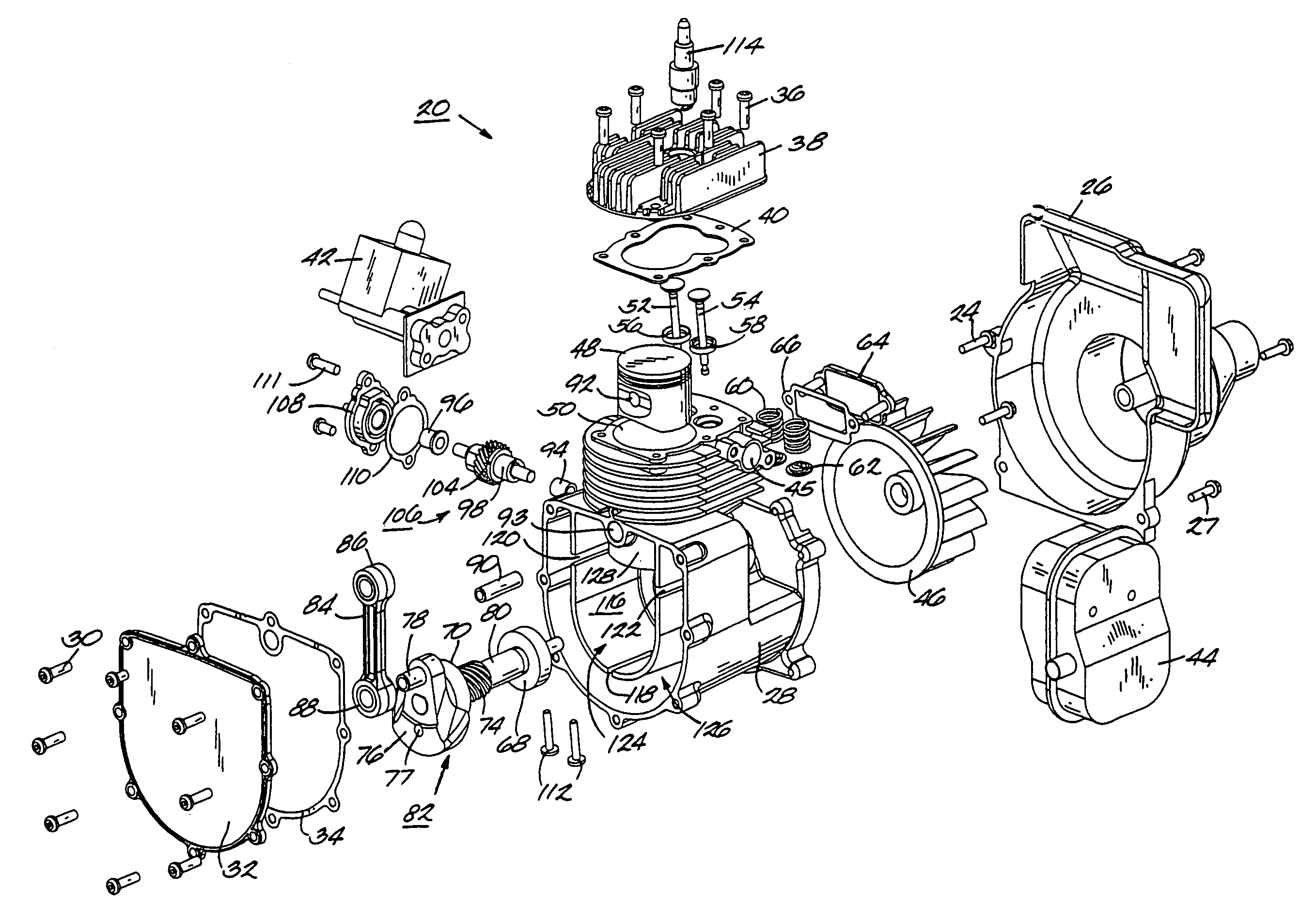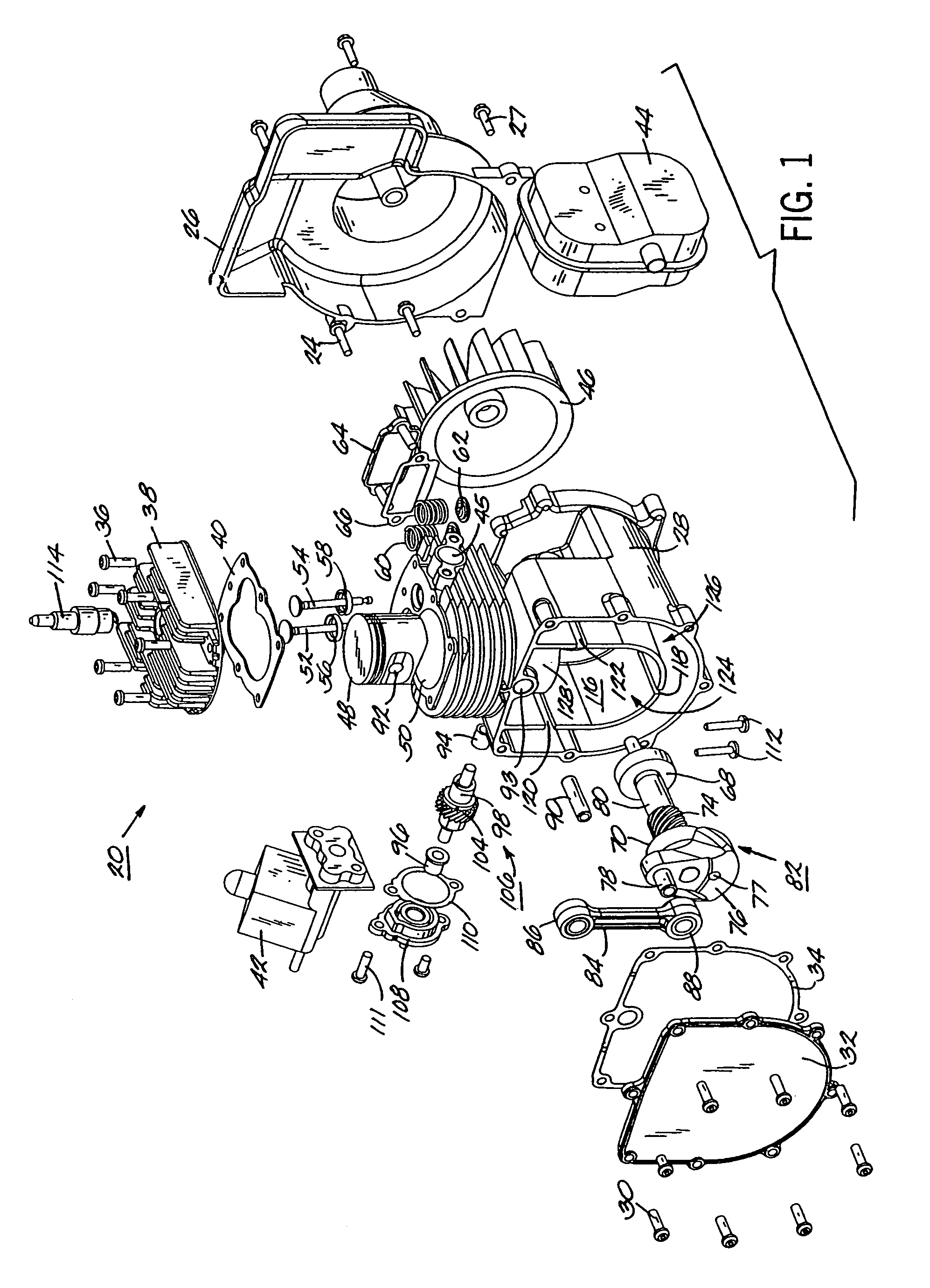Four-stroke internal combustion engine
a four-stroke, internal combustion engine technology, applied in the direction of lubricant level maintenance, lubrication elements, pressure lubrication, etc., can solve the problems of insufficient lightness, heavy weight of prior four-stroke engines, and inability to be used in operator-carried power tools, etc., to achieve sufficient lightness, low emissions, and economical manufacturing
- Summary
- Abstract
- Description
- Claims
- Application Information
AI Technical Summary
Benefits of technology
Problems solved by technology
Method used
Image
Examples
Embodiment Construction
[0073]Illustrated in FIG. 1A of the drawings is a four-stroke internal combustion engine 20 according to the present invention. The engine 20 drives a conventional shaft typically housed in a shaft tube 22 which in turn drives an implement having a rotary head, cutting filament or blade, rotary impeller, or the like, depending on the type of power tool in use (see, e.g., FIG. 19). The shaft arrangement shown in FIG. 1A (and FIG. 19), typically used in conjunction with a hand-held power trimmer, is used for illustrative purposes only and it should be understood that other power tools such as those mentioned previously herein are capable of utilizing the four-stroke engine of the present invention. In other words, generally, the engine according to the present invention is preferably used in an orientation where the implement or working tool has an axis which is substantially parallel with a crankshaft axis. The engine according to the present invention may also be orientated with the...
PUM
 Login to View More
Login to View More Abstract
Description
Claims
Application Information
 Login to View More
Login to View More - R&D
- Intellectual Property
- Life Sciences
- Materials
- Tech Scout
- Unparalleled Data Quality
- Higher Quality Content
- 60% Fewer Hallucinations
Browse by: Latest US Patents, China's latest patents, Technical Efficacy Thesaurus, Application Domain, Technology Topic, Popular Technical Reports.
© 2025 PatSnap. All rights reserved.Legal|Privacy policy|Modern Slavery Act Transparency Statement|Sitemap|About US| Contact US: help@patsnap.com



